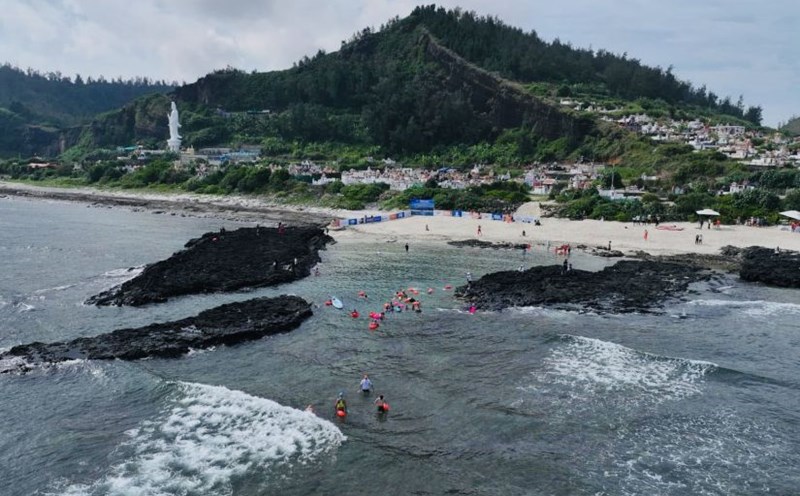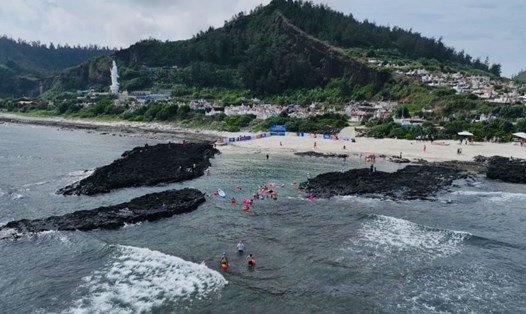The hot the development, the more dangerous
Before going into the issue of transforming and developing green tourism, let me tell you the story of tourism in the country of Bhutan. It was not until 1974, when Bhutan allowed foreign tourists to travel, and they controlled their reception of only about 300 visitors per year.
To explain this small number of visitors, the Bhutanese government has proposed calculations that the capacity to treat solid waste generated by tourists and the environmental impacts of the country's tourism activities are only limited to that limit, if they exceed the threshold, it will be overloaded, unbalanced and will bring the risk of environmental pollution.
This shows that the non-smoking industry is clearly a huge threat to the environment, landscape and indigenous culture. Recognizing this risk, Bhutan has set a limit of 300 visitors per year, accordingly the minimum spending of 200 USD/person/day to balance the tourism economic plan.
Up to now, due to better waste treatment capacity and strong attraction from economic benefits brought by tourism - in comparison with other business and production segments - the Bhutan tourism industry has developed strongly, with more than 300,000 visitors per year.
The attraction of economic benefits from tourism is a very undeniable thing, even for a Buddhist country like Bhutan. We have witnessed too many stories and lessons about tourism in Vietnam and around the world when localities accept hot development to develop tourism in exchange for huge profits.
But after the waves passed, it left a scene of devastation and disrepair that took decades to recover to its original state, or could never return. Tam Dao, Sa Pa, Da Lat are examples of the positive and negative impacts that the wave of tourism development is too hot.
Therefore, we cannot put tourism off the economic development problem of the locality and the country because this is truly an endless resource if we know how to exploit it properly and properly. To do this 2 Right words, there is only one way, which is to transition to green tourism.
In this transformation, all components from local people, the tourism industry and tourists are the subjects directly participating in environmental protection and local tourism landscape, not distinguishing between service providers and service beneficiaries as before.
From footprints to carbon traces
In the form of green tourism, humans are a factor that emits carbon emissions, solid waste, soft waste, waste, actions that damage the environment and landscape... Therefore, humans must participate thoroughly in environmental protection with the goals of reducing carbon emissions, reducing waste and waste, and preserving biodiversity and natural resources.
Currently, awareness of environmental protection and tourism landscape is increasingly valued by both tourists and tourism workers, from household to national scale. If the motto of the "backpacker" community in the past was: " nothing goes beyond photos, nothing leaves anything but footprints", the motto of the current tourism community is "Limiting carbon traces".
So how to limit the carbon footprint in tourism? In fact, the answer is right before our eyes, and it has existed for a long time but has not attracted much attention. For example, the habit of using zero-emission means of transport such as bicycles and walking in tourism activities.
Trekking through forests, climbing mountains, walking through biodiversity terrains, camping in nature... are more environmentally friendly tourism activities than resort tourism. Tourist destinations in the Northwest, Central Highlands or the Mekong Delta are actively developing tourism that relies entirely on natural conditions to create attraction.
Along with that, we participate thoroughly in a green lifestyle in tourism activities: Eliminate the habit of using disposable items, plastic, nylon; limit waste that can pollute water resources and land if not treated, such as soap, shampoo, detergent, chemicals, etc.
At the same time, solid waste is self-treated, not thrown into areas prone to pollution due to lack of collection and treatment activities. A lesson for the money is that the Everett world-class roof is being trashed with clothes, tents, and climbing tools that have been discharged for encroachment. This garbage could have lived here for hundreds of years.
Energy is also a factor that determines whether to leave a large or small carbon footprint in tourism activities. Removing the use of personal vehicles such as cars and motorbikes to public transport, from gasoline-powered engines to hydrogen-powered engines also contributes to reducing emissions.
In accommodation areas, renewable energy from solar and wind will contribute greatly to reducing carbon footprints and towards the Government's Net Zero goal. Solar power and wind power can replace energy sources from hydropower and thermal power for lighting, cooking, and running electrical equipment.
Tourist areas in the Central and South Central regions with more than 300 sunny days/year are very suitable for using renewable energy. If this transformation is spread on a large scale, it will significantly reduce pressure on natural resources such as water, forests, minerals, etc.
Along with that, building tourist areas in harmony with natural landscapes using indigenous materials and styles also helps to green the tourism industry. Using people's houses as accommodation, instead of building hotels and resorts unfamiliar with the landscape will bring many benefits.
First, it reduces the cost of new construction, as well as the impacts brought by new construction. Second, people have long-term, sustainable livelihoods. Third, tourists can experience the indigenous life that is both strange and attractive, instead of industrial resort style.
It is the local material and daily activities that will have the potential to become a tourist tourist activity. At the little sliced village at the foot of Khau Pha Pass (Cao Pha commune, Yen Bai), every day, the guides are the host to take tourists to climb the mountain to pick herbs, trekking grass hill overnight, or go to the forest to bathe in the stream.
These activities not only increase the quality and attractiveness of tourism but also create unique green tourism products, which can protect indigenous culture and environment, while raising public awareness of the importance of environmental protection and significantly reducing carbon footprints.











